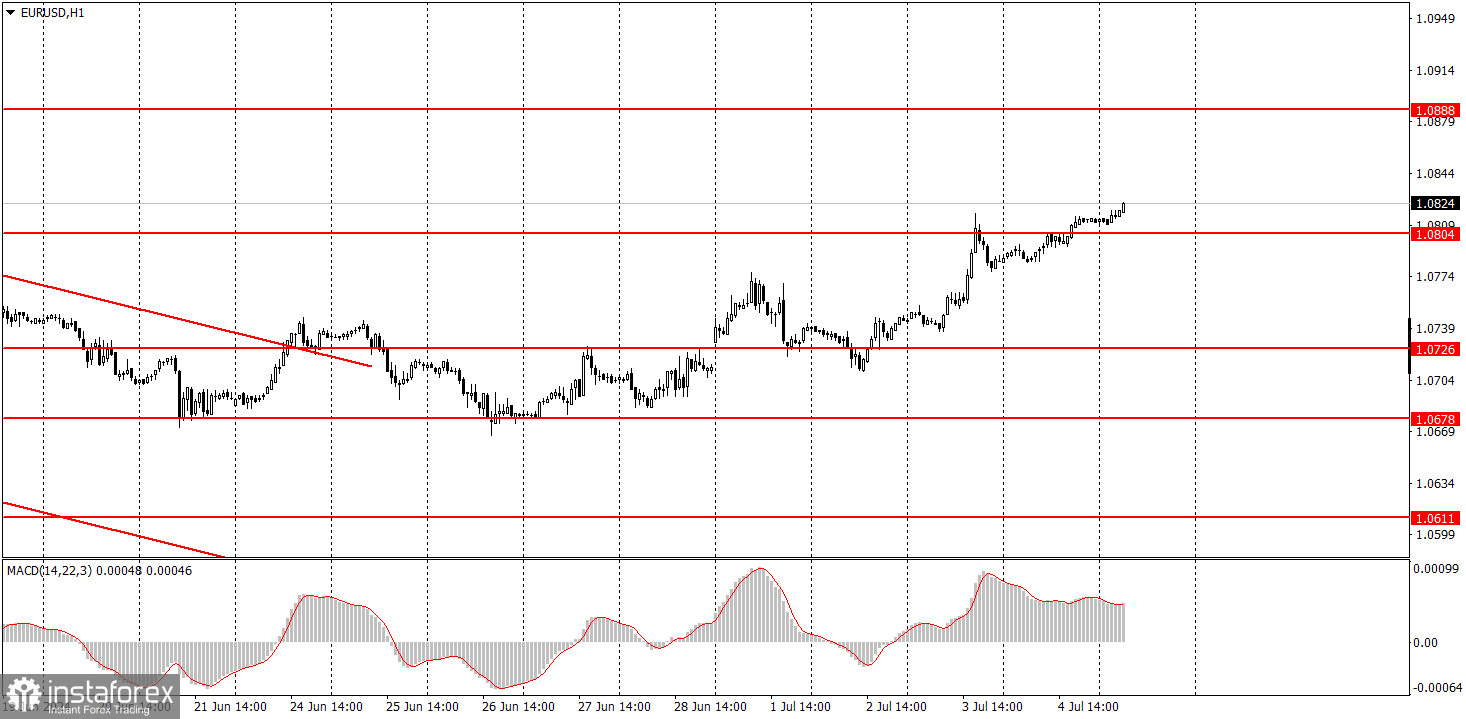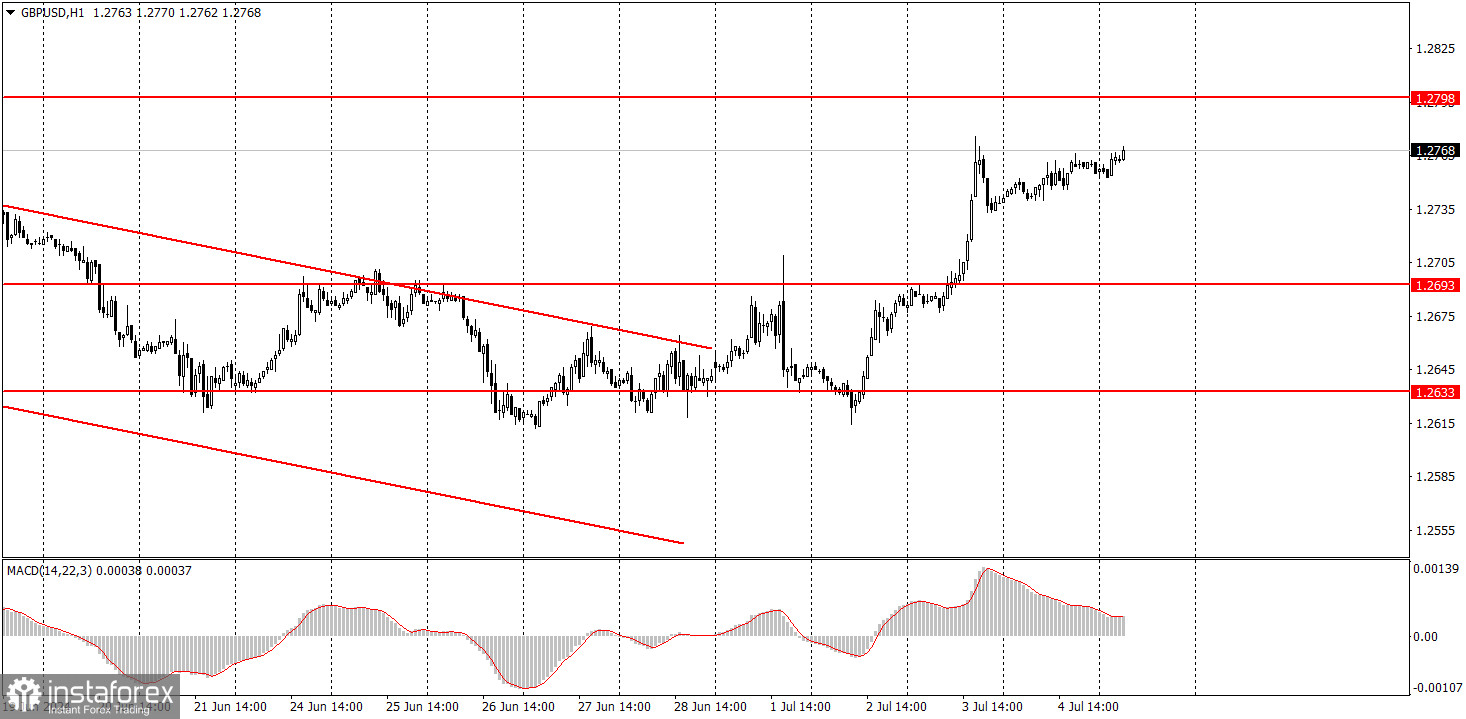Analysis of macroeconomic reports:

There's a full plate of macroeconomic events slated for Friday. First, we want to highlight the morning reports. Germany will publish its industrial production report for May, and the Eurozone will release its retail sales data for the same month. The German report is considered of secondary importance, while the Eurozone data holds moderate significance for the market.
The U.S. docket will feature three crucial reports: the labor market data, the unemployment rate, and wage data. It is worth mentioning that this week's ADP report showed weak figures; however, there is no direct correlation between the ADP report and NonFarm Payrolls. Therefore, NonFarm Payrolls could easily exceed the forecasted 190,000. The unemployment rate could either decrease or increase, although forecasts suggest it will remain unchanged at 4% for June. In the second half of the day, everything will depend on the U.S. macro data. However, the dollar can only hope for a downward correction now.
Analysis of fundamental events:

From Friday's fundamental events, we can highlight European Central Bank President Christine Lagarde's speech. She has already spoken twice this week, so we don't expect to hear anything new from her. Her rhetoric has been quite neutral. Many in the ECB fear that at some point, inflation will stop slowing down, so the central bank will continue to make decisions based on incoming information at each meeting. If inflation eases too slowly or doesn't slow down at all, the ECB may choose to pause the rate cut cycle. However, no one can predict how inflation in the EU will behave in the coming months.
General conclusions:
There will be plenty of significant events on the last trading day of the week, but the focus is on the NonFarm Payrolls and unemployment reports in the U.S. The outcome of these reports will determine whether the dollar can recover some of its losses by the end of the week. It makes no sense to predict where both pairs will end up by the end of the day.
Basic rules of a trading system:
1) Signal strength is determined by the time taken for its formation (either a bounce or level breach). A shorter formation time indicates a stronger signal.
2) If two or more trades around a certain level are initiated based on false signals, subsequent signals from that level should be disregarded.
3) In a flat market, any currency pair can produce multiple false signals or none at all. In any case, the flat trend is not the best condition for trading.
4) Trading activities are confined between the onset of the European session and mid-way through the U.S. session, after which all open trades should be manually closed.
5) On the 30-minute timeframe, trades based on MACD signals are only advisable amidst substantial volatility and an established trend, confirmed either by a trendline or trend channel.
6) If two levels lie closely together (ranging from 5 to 15 pips apart), they should be considered as a support or resistance zone.
How to read charts:
Support and Resistance price levels can serve as targets when buying or selling. You can place Take Profit levels near them.
Red lines represent channels or trend lines, depicting the current market trend and indicating the preferable trading direction.
The MACD(14,22,3) indicator, encompassing both the histogram and signal line, acts as an auxiliary tool and can also be used as a signal source.
Significant speeches and reports (always noted in the news calendar) can profoundly influence the price dynamics. Hence, trading during their release calls for heightened caution. It may be reasonable to exit the market to prevent abrupt price reversals against the prevailing trend.
Beginners should always remember that not every trade will yield profit. Establishing a clear strategy coupled with sound money management is the cornerstone of sustained trading success.
 English
English 
 Русский
Русский Bahasa Indonesia
Bahasa Indonesia Bahasa Malay
Bahasa Malay ไทย
ไทย Español
Español Deutsch
Deutsch Български
Български Français
Français Tiếng Việt
Tiếng Việt 中文
中文 বাংলা
বাংলা हिन्दी
हिन्दी Čeština
Čeština Українська
Українська Română
Română

